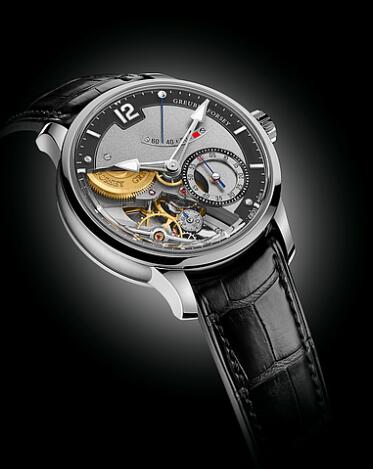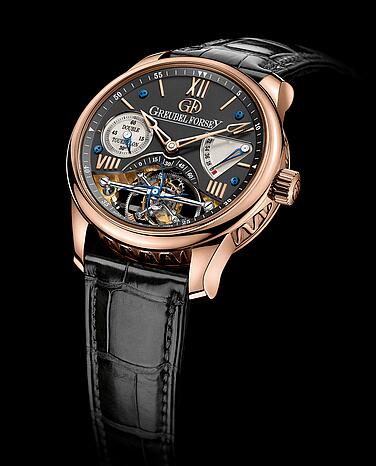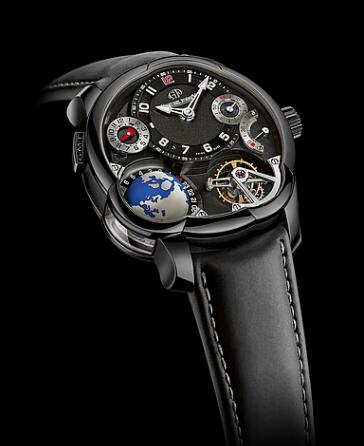Greubel Forsey new double tourbillon 30° craft ceramic

The Double Tourbillon 30º is one of the most important timepieces in the Greubel Forsey catalog. As the manufacturer’s first timepiece launched at Baselworld in 2004, after five years of development by Stephen Forsey and Robert Greubel, it It inspired all the successes and innovations that Greubel Forsey has achieved over the past 15 years. However, only seven years after the introduction of the Double Tourbillon 30º Double Tourbillon 30º technology, the watch reconstructed the movement of today’s famous timepieces in a way that the wearer can observe its movement. The view of the components is as unobstructed as possible.
Double Tourbillon 30º double tourbillon technology eventually became another major achievement of the young brand. It won the first prize of the Concours International de Chronométrie international time trial. In this event, it won the highest record of 915 points (out of 1000 points). ), the average timing speed is 0.3 to 0.8 seconds per second. On the day, he also won the 2009 GPHG Complicated Watch Award. In 2010, another version of the Double Tourbillon 30º Historique won the prestigious Aiguille d’Or at the GPHG that year.
So, what makes the 30x double tourbillon so commendable? As the first of replica Greubel Forsey‘s proprietary “invention”, it uses the concept of a tourbillon as a regulating device in a fundamentally different way. Basically, a 60-second tourbillon tilted 30 degrees is replaced by an external tourbillon, which rotates every four minutes. (The two tourbillon cages account for 132 of the 421 parts of the movement in total.) In fact, this averages the gravity error produced by the watch oscillator to a much higher degree than the tourbillon-enhanced timepiece. The manual-winding manufacturing movement has four coaxial barrels, which are connected to a spherical power reserve differential, which provides up to 120 hours of autonomy when fully wound.
What we have today is a brand new look with the dual tourbillon 30º technology. For the first time in its history, the brand has applied ceramics to the case (previous limited edition timepieces offered rose gold, white gold, platinum, titanium, and memorable sapphire crystals). Although ceramics may be the most recognizable aesthetic update, there are also many innovations in movement construction.

The latest version of the dual tourbillon 30º technology was released with a sapphire crystal case, but the structure of the movement is almost the same as its precious metal predecessor. Although today’s release uses the same modern ceramic case, its movement structure has now been updated with sapphire crystal. Stephen Forsey and Robert Greubel once again re-examined the movement structure of the watch to understand how the wearer can benefit from the use of transparent materials. The hour and minute hands and the four-minute tourbillon rotation indicator at 6 o’clock are made of sapphire crystal, allowing light to enter all aspects of the movement design. But that’s not all. The three-dimensional bridges are each made of a sapphire crystal, which the brand points out is particularly challenging. The sides of each bridge are manually polished using various abrasive techniques and special tools. In stark contrast to the natural transparency of sapphire, these angles have been cut to a matte angle. Therefore, all wheels and pinions-typical things hidden in the crevices of watch movement design-have been fully revealed.
On one side of the dial, the polished gold hands-full of SuperLuminova hands-have been hollowed out, in the traditional Double Tourbillon 30º style. The new features here are the tourbillon bridge, barrel bridge, differential bridge and power reserve bridge (previously executed in nickel silver) which were rebuilt in sapphire for consistency. One of the few aspects of the dial not shown by the sapphire is the small seconds and power reserve indicator, which are made of gold and blue, which contrast with the frosted main panel and complement the blue ceramic case.
It can be seen from the bottom cover of the exhibition that it is now a sapphire gear bridge with a multi-layer structure with multiple of holes. These allow holes make the wheels overlap the sapphire. The lower tourbillon bridge previously made of steel has also undergone the same treatment. The mounting system of the bridge can absorb too much impact, so there has never been a brand left behind, even if the screw problem in the movement has been solved.

Although the movement design update of the latest version of the Double Tourbillon 30°Technique is perhaps the most noteworthy aspect of this version, the ceramic case also has many features. More and more brands are seeing colored ceramic options, and Greubel Forsey (Greubel Forsey) chose the blue option (although I won’t be surprised to see various other colors appear next year). The advantage of colored ceramics is that although it is difficult to achieve at first, the color will not wear out because it is an attribute of the material itself, which means that the blue seen in the image using Double Tourbillon 30° technology in this article will be the same as the watch 20 The blue will be the same 30 years later.
One of the main advantages of ceramics is its resistance to scratches and other damage. For those who like to carry their watches with their hands, this is good news, but for finishing, this is a problem, which Greubel Forsey is proud of. The back cover, strap and bezel are all made of a piece of ceramic, and then undergo a series of hand polishing and polishing treatments. The housing size is 48.40 mm in diameter and 17.77 mm in height. Finally, the watch copy is also equipped with a matching blue rubber strap and titanium folding clasp, and is decorated with a hand-engraved GF logo. The crown is also made of blue ceramic and is engraved with the GF logo.
Leading independent brands usually gradually release some case material options for each specific version, but few brands remake the entire movement of the watch to provide different things for their collectors and loyal followers, but this It was Greubel Fauci who did it here.
